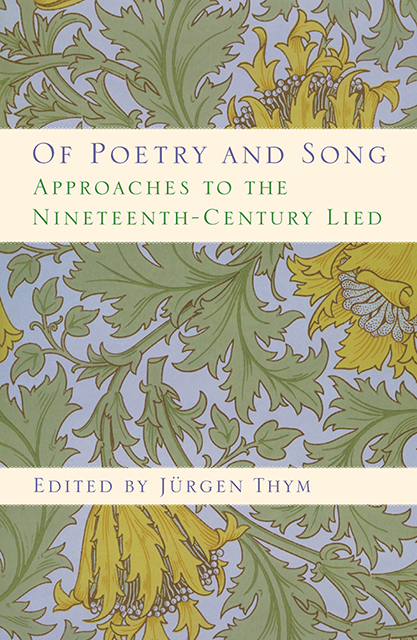Preface
Published online by Cambridge University Press: 02 March 2023
Summary
Of Poetry and Song: Approaches to the Nineteenth-Century Lied constitutes a kind of symposium, a (mostly virtual) get-together of scholars with a common interest and a similar approach to their subject matter. Their conversations extended over decades. Sometimes they met at conferences, sometimes they offered separate contributions at the same conference session, and sometimes two teamed up on a conference paper or article. In retrospect, it might even seem that the four humanist-musicians (or were they musician-humanists?) constituted a school.
It was by no means foreordained that the quartet of scholars represented here through selected writings would recognize each other as like-minded and belonging together, as disciplinary boundaries and careers in very different institutions separated rather than united them. And yet, from very early in their academic careers, the four individuals pursued studies in the German Lied informed by the insight that the song is a compound genre whose aesthetic character is determined by the interaction of poetry and music and that such studies are most successful when expertise in musical and literary matters comes together in one individual or, alternately, when scholars of Germanistik and musicology (or music theory) collaborate.
There were additional common underpinnings. The authors very early on were united by their dissatisfaction with the state of research on Lieder around 1970, which, with a few notable exceptions, may be characterized as a divide between music scholars, often analyzing the Lied with little or no regard for the poem that inspired the setting (as if a song were just a piece of chamber music), and specialists on Goethe or the German Romantic poets, insisting on the primacy of the literary text (or the interpretation of a particular critic) as determining the quality of a setting. When attention was paid to the Lied as the setting of a poem, authors commented almost exclusively on the images of the poetry or the emotional content of the words and how these aspects found their equivalents and analogues in the musical setting.
- Type
- Chapter
- Information
- Of Poetry and SongApproaches to the Nineteenth-Century Lied, pp. ix - xviiiPublisher: Boydell & BrewerPrint publication year: 2010



